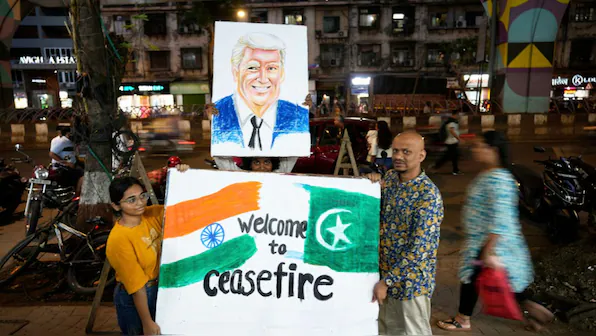Pakistan-India Ceasefire Agreement: Examining Pakistan’s Violations

Pakistan has repeatedly violated the Pakistan-India ceasefire agreement. Learn about the consequences & global responses.
1. Introduction of Pakistan-India Ceasefire Violations
The fragile relationship between India and Pakistan has been punctuated by wars, skirmishes, and diplomatic standoffs since their independence in 1947. Tensions peaked once again in early 2021 when both nations found themselves on the brink of military escalation along the Line of Control (LoC). In a surprising yet welcome move, both countries agreed to a ceasefire, reaffirming the 2003 agreement to stop cross-border hostilities.
The announcement came as a joint declaration by the Directors General of Military Operations (DGMOs) of India and Pakistan. This agreement marked a moment of hope for the region and was widely seen as a diplomatic win. Indian External Affairs Minister S. Jaishankar welcomed the development and emphasized the need for long-term peace through constructive dialogue and trust-building. His statement underscored India’s commitment to maintaining peace, provided Pakistan did the same.
2. Ceasefire Agreement Details
The core of the ceasefire agreement was simple yet powerful: both countries agreed to honor the truce along the LoC and all other sectors. This meant a complete cessation of artillery shelling, sniper attacks, and infiltration attempts across the contested border. The agreement came in the wake of heightened tensions following Operation Sindoor, which significantly influenced diplomatic urgency on both sides. The goal was to reduce tensions, protect civilian lives, and build an environment conducive to peace talks.
Importantly, the agreement wasn’t limited to military restraint. It was also intended as a foundation for diplomatic engagement. It aimed to encourage confidence-building measures, open backchannels of communication, and reduce misunderstandings that often lead to violence. In the broader context, the agreement reflected a mutual recognition that war benefits neither side and that peaceful dialogue remains the only sustainable path forward.
3. Pakistan-India Ceasefire Violation: Ongoing Threat to Peace
The Pakistan-India ceasefire violation remains a serious issue, with Pakistan frequently breaching the agreement through cross-border attacks. Each Pakistan-India ceasefire violation fuels tension, causes civilian harm, and disrupts regional peace. Despite international calls for restraint, Pakistan-India ceasefire violations continue, drawing criticism and concern from global bodies. To achieve lasting peace, both nations must address the root causes behind every Pakistan-India ceasefire violation and recommit to diplomatic dialogue.
4. Consequences of Violations
Pakistan’s violations have deeply undermined the credibility of the ceasefire. Every shell fired or infiltration attempt not only breaches the agreement but erodes the fragile trust that the two nations tried to rebuild. These violations increase the risk of miscalculation and full-scale conflict, especially in a region already burdened with deep-rooted hostility and nuclear capabilities.
For civilians living near the LoC, the consequences are devastating. Schools are shut down, agricultural work is disrupted, and families are often forced to flee their homes. These frequent displacements create long-term trauma and economic instability, further complicating peace efforts.
5. Calls for Action
The international community has taken notice. Countries such as the United States, France, and Russia have urged both India and Pakistan to adhere to the ceasefire and resume talks. Several human rights organizations have also called out Pakistan for its violations and urged transparency and accountability.
India, on its part, has called for global pressure to ensure that Pakistan remains committed to its obligations. It has emphasized that peace is a two-way street and that goodwill must be matched with action, not undermined by hostile intent.
6. Conclusion
The Pakistan-India ceasefire agreement offered a glimmer of hope in a region plagued by decades of conflict. While the agreement remains a critical step toward peace, its success depends entirely on honest implementation. For the people living along the LoC and for the future of South Asia, both nations must recognize that diplomacy, not deception, is the only way forward.
If Pakistan is serious about peace, it must match its words with verifiable actions. Only then can this fragile truce become a lasting peace agreement rather than another failed attempt at reconciliation.
For Live Updates Visit THE HINDU